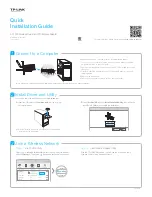
Page 14
www.versitron.com
4.3.6 RS-485 / RS-422 Data Transmission Circuit
In the data transmission circuit, a RS-485
/
RS-422 interface IC, U18, is used. This IC takes in a
balanced data signal and converts it into a TTL signal. The TTL data signal is then fed to the CPLD, where it is
multiplexed with the digitized audio signal. During the data reception, the TTL signal is obtained from the
CPLD, which then enters the interface IC. Here the data is reformatted to a RS-485 or RS-422 signal and is
transmitted out of the RJ45 connector.
4.3.7
Fiber Optic / Copper Transceiver Circuit
This design has an option of multiplexing data (RS-485 or RS-422) and analog (Telephone audio signal)
onto either a copper or fiber network. The selection for a copper (4-wire twisted pair) or fiber interface is
accomplished by dip switch settings as described in paragraph 2.3.2.
When the multiplexed audio and data signals are transmitted out of the CPLD, it goes into the JFET, Q1
(VN10KM). By turning on and off Q1 JFET VN10KM, the fiber optic transmitter Z2 is turned on and off
respectively. This is how the optical signal is transmitted out of the Modem. On the receive side, optical
receiver Z1 takes the optical signal from the fiber and converts it into a low voltage current. This current signal
is fed into the fiber optic quantizer IC, through a 0.01
µ
F coupling capacitor, C8. This chip converts the low
voltage signal into a TTL signal, which then goes into the CPLD where the multiplexed audio and data signals
are de-multiplexed and sent to their respective destinations.
When a copper-to-copper interface is selected, the multiplexed audio and data signal is transmitted out of
the CPLD, which then goes into U17, a full duplex RS-485 / RS-422 interface IC. This chip converts the TTL
data signal into a RS-485 / RS-422 signal and is transmitted on a 4-wire twisted pair telephone wire. On the
reception side, U17, a full duplex RS-485 / RS-422 interface IC, receives the signal from a 4-wire UTP. The
RS-485 or RS-422 data signal is converted into a TTL data signal and is transmitted to the CPLD, U1. Here
the multiplexed audio and data signals are de-multiplexed and sent to their respective destinations.


































